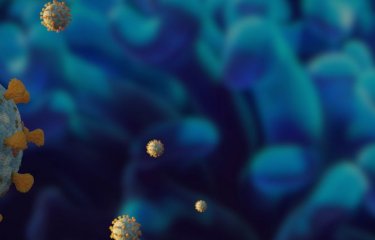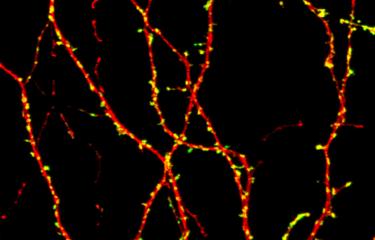At the Cap'CARNOT event on June 27, 2019 in Paris, the Pasteur Microbes and Health Carnot Institute, composed of several Institut Pasteur departments and technological platforms, presented a tool based on artificial intelligence that can be used to monitor the behavior of groups of mice in real time and characterize their social interactions.

The Cap'CARNOT event is organized by the Association of Carnot Institutes to promote dialog between the Carnot Institutes1 and drivers of innovation in artificial intelligence for health. At the event on Thursday June 27, 2019, the Pasteur Microbes and Health Carnot Institute presented a tool based on artificial intelligence that can be used to monitor the behavior of mice in real time and characterize their social interactions. This innovative system has considerable potential for research that uses mouse models to characterize and understand the role of environmental mutations and factors in both psychiatric and infectious diseases. It is also of interest for therapeutic trials for these diseases. This progress is all the more important as the system is also open source and open hardware, two important elements of the open science movement to which the Institut Pasteur is firmly committed (see Strategic Plan 2019-2023).
1. Carnot Institutes are public research bodies recognized by the French Ministry of Research for their commitment to developing R&D that drives industrial innovation.
Learn more about the 'Pasteur Microbes & Santé' Carnot Institute (Pasteur Microbes & Health)
An innovative model for a study on autism
A new tool known as the Live Mouse Tracker has been developed by Fabrice de Chaumont, a scientist in the Institut Pasteur's Bioimage Analysis Unit led by Jean-Christophe Olivo-Marin (Department of Cell Biology and Infection, Institut Pasteur, and Pasteur Microbes and Health Carnot Institute), and Elodie Ey, a scientist in the Human Genetics and Cognitive Functions Unit led by Thomas Bourgeron (Department of Neuroscience, Institut Pasteur), in collaboration with the Neurophysiology and Behavior team led by Philippe Faure (Sorbonne University).
"This system uses a series of sensors (infrared camera, depth sensor and RFID tags) in conjunction with a machine learning program for real-time analysis of the behavior of groups of mice over an unlimited time period," explains Fabrice de Chaumont. The mice were observed as part of a study on autism. Using the Live Mouse Tracker, scientists studied the impact of mutations in SHANK2 and SHANK3 – genes associated with autism – on their individual and social behavior. "Comparing the behavioral profiles of female SHANK2 and SHANK3 knockout mice revealed different levels of activity and abnormality during complex social interactions," says Elodie Ey.
In psychiatry, it is vital to assess the social behavior of mice in both normal and pathological conditions to understand which neuronal systems are involved in disease. "This research and the related technological developments have huge potential for fields in which mouse models are used to characterize and understand the role of mutations or molecules in the establishment and treatment of psychiatric diseases," conclude Thomas Bourgeron and Jean-Christophe Olivo-Marin.
The research findings are published in the journal Nature Biomedical Engineering.
A tool based on machine learning
Machine learning, or deep learning, is a field of study within artificial intelligence that draws on statistical approaches to enable computers to "learn" from data; in other words to improve their ability to solve tasks without being explicitly programmed for each one.
The method combines computer vision via a 3D infrared camera, (random forest) machine learning to identify the animals and their posture, and radio-frequency identification (RFID) to track mouse monitoring quality. The tool can be used to monitor several individuals in detail, to automatically quantify more than thirty individual and social behaviors and provide a phenotypic profile for each animal. Machine learning is used at several stages in the system, to filter out background animals, confirm identity and guide the mice.
Find out more about Cap'CARNOT (in French)
Christophe Zimmer, Head of the Imaging and Modeling Unit at the Institut Pasteur, gave an interesting interview in May 2018 about artificial deep neural networks – algorithms with the ability to learn ("deep learning") that are spurring renewed interest in artificial intelligence.
This study is part of the priority scientific area Brain connectivity and neurodegenerative diseases of the Institut Pasteur's strategic plan for 2019-2023.








